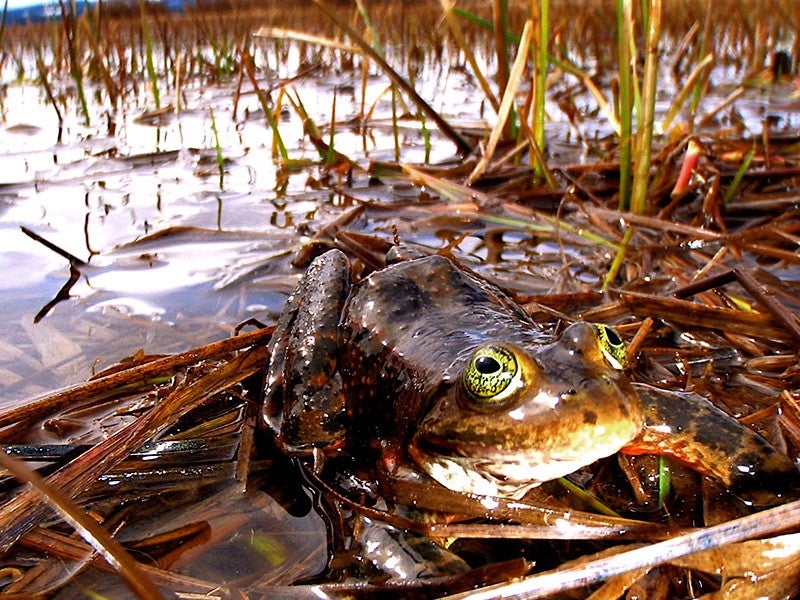Protecting Oregon's Deschutes River, Imperiled Wildlife
As a result of water storage and irrigation operations, the once stable natural flows of the Upper Deschutes have been replaced by dramatic and unnatural flow swings, damaging water quality and harming the wildlife and people who depend on the health of the river.
Clients
Attorneys
Regional Office / Program
Case Overview
Represented by Earthjustice, WaterWatch of Oregon has filed suit in federal district court against the U.S. Bureau of Reclamation and several irrigation districts over harm caused by their water use operations in the Upper Deschutes River.
The lawsuit alleges that managing the Upper Deschutes like an irrigation ditch rather than a natural resource has caused significant damage to the river’s health, including harm to the Oregon spotted frog, a threatened species under federal law.
As a result of water storage and irrigation operations, the once stable natural flows of the Upper Deschutes have been replaced by dramatic and unnatural flow swings which damage water quality while harming fish and wildlife. One of the most visible recent examples of this harm occurred in October 2013, when a rapid flow reduction due to irrigation management caused a kill that claimed nearly 3,000 fish and sparked outrage throughout the state.
The challenge, filed in U.S. District Court Eugene Division, deals specifically with the stretch of the Deschutes between Wickiup Reservoir and the City of Bend.
Facts: The Oregon Spotted Frog
- In August 2014, the U.S. Fish and Wildlife Service listed the Oregon spotted frog as a threatened species under the Endangered Species Act.
- Oregon spotted frog populations have plummeted. The 2–4 inch long, black spotted frog was once common from British Columbia to Northern California. The frogs are no longer in California or the Willamette Valley. The Deschutes Basin remains one of the few places with frogs present, but they are in trouble.
- The Oregon spotted frog inhabits wetland and riparian areas in the Upper Deschutes Basin, but those areas are vulnerable and frogs are harmed when operation of the water management system causes large and sharp changes in river flows and reservoir levels in the summer and winter. Frog egg masses are dried out, and adult and juvenile frogs can be left stranded based upon the fluctuations at various times of the year. This harms not only the Oregon spotted frog, but fish, wildlife and people that depend on the health of the river.

Case Updates
Case page created on January 11, 2016.
